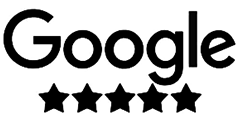
June 9, 2025
By
Kamran Awan
Category
Digital Agency
Introduction to personalised marketing
What is personalised marketing?
Personalised marketing is no longer just a trend—it's the new standard. It refers to the strategic practice of using individual customer data to tailor marketing messages, product recommendations, and overall user experiences to each person. Think of it as the difference between receiving a generic birthday card from a store and getting one with your name, favourite colour, and preferred product inside—it simply hits different.
By using tools like CRM systems, analytics software, and email marketing platforms, brands can craft tailored experiences based on data points such as user behaviour, preferences, location, device usage, and purchase history. Personalisation shows customers that you're paying attention, and when done right, it creates stronger brand loyalty, higher conversion rates, and a better customer experience.
Why personalisation matters in modern marketing
Today's consumers are savvier and more demanding than ever. They expect brands to know who they are, what they like, and when they're most likely to engage. A recent survey revealed that over 80% of consumers are more likely to make a purchase from a brand that offers personalised experiences.
Personalisation matters because it cuts through the noise. Instead of blasting one message to everyone and hoping it sticks, you speak directly to the individual. It's about relevance, timing, and connection. Not only does this boost engagement and sales, but it also nurtures long-term relationships with your audience. It's not just about selling—it's about caring, and that's what customers remember.
Understanding the types of user data
First-party data
First-party data is the goldmine of personalised marketing. This is the data you collect directly from your audience through your own channels—think website analytics, email subscriptions, purchase history, and customer feedback. It's reliable because it comes straight from the source and can be gathered with full transparency.
Why is it so valuable? Because it's accurate, relevant, and often reflects real-time behaviour. If a user adds an item to their cart but doesn't check out, that's a strong signal for a follow-up email with a discount code. That's the power of first-party data in action.
Second-party data
Second-party data is basically someone else's first-party data. You get access to it through partnerships or data-sharing agreements. For instance, a travel website might share data with a hotel chain to help tailor promotions based on user interest. This kind of data can be incredibly helpful for expanding your audience insights, but it requires strong, trustworthy collaborations.
Third-party data
Third-party data is collected by external aggregators who gather data from multiple sources and sell it. It includes demographics, browsing behaviour, and interests, often used for broad audience targeting in paid advertising. While it can help you scale your reach, it's typically less accurate and raises more privacy concerns than first- or second-party data.
Behavioural data vs. demographic data
Behavioural data focuses on what users do—clicks, time on page, scrolling behaviour, purchases. Demographic data, on the other hand, tells you who they are—age, gender, income, education level. Combining these two helps you create a fuller picture of your audience, leading to better segmentation and more impactful personalisation strategies.
Collecting user data ethically and effectively
Best practices for ethical data collection
Let's face it—nobody wants to feel like they're being spied on. So, collecting data ethically is essential. The golden rule? Always be transparent. Let users know what data you're collecting and why. Provide clear, easy-to-understand privacy policies. Ask for consent—don't just assume it.
Use opt-in forms, cookie consent banners, and permission-based marketing tactics to stay on the right side of the law (and your audience's trust). The more upfront you are, the more your users will respect your brand. And when people feel safe, they're more willing to share the data you need.
Tools and techniques for gathering data
There's no shortage of tools to help you gather data. Here are some of the most effective:
- CRM Software like HubSpot or Salesforce to track customer interactions.
- Analytics Platforms like Google Analytics for behavioural data.
- Surveys and Feedback Forms for direct insights.
- Heatmaps like Hotjar to understand user interactions on your site.
- Email Platforms like Mailchimp or Klaviyo to track open and click-through rates.
Analysing user data for actionable insights
Leveraging analytics tools
Once you've gathered data, the next step is to make sense of it. That's where analytics tools come in. Platforms like Google Analytics, Mixpanel, and Tableau allow you to track user behaviour in real time. They help you answer questions like: Which pages are converting? Where are users dropping off? What content keeps them coming back?
Use dashboards to visualise trends and compare user segments. For example, you might discover that mobile users are spending less time on your checkout page. That insight could lead to mobile-specific UX improvements that increase sales.
Identifying key customer segments
Segmentation is the heart of personalised marketing. Once you've analysed the data, group your users into meaningful categories—based on behaviour, preferences, demographics, or purchasing habits.
Let's say you're an e-commerce brand. You might have segments like:
- Frequent Shoppers who respond well to loyalty programmes.
- First-Time Visitors who need more education before buying.
- Cart Abandoners who benefit from retargeting ads or email nudges.
Creating buyer personas from data
Using data to craft detailed personas
Imagine trying to have a conversation with someone you know nothing about—it's awkward and ineffective. That's what marketing without personas feels like. Buyer personas are fictional characters based on real user data that represent different segments of your target audience.
To create these personas, start with data. Use first-party sources like CRM systems, customer feedback, purchase history, and on-site behaviour. Then enrich this with demographic insights—age, location, job title, income level—and psychographics like interests, lifestyle, and values. This way, your personas reflect both who your customers are and how they think.
Let's say you run a fitness apparel brand. One of your personas might be:
- Name: Athletic Amy
- Age: 28
- Occupation: Social media manager
- Goal: Stay fit while juggling a busy lifestyle
- Pain Point: Needs comfortable workout clothes that double as everyday wear
- Favourite Channels: Instagram and YouTube
The role of personas in personalisation strategies
Personas help you shift from generic to targeted messaging. Once you've defined your personas, you can tailor marketing efforts to suit each type's preferences, behaviours, and needs. For instance:
- Athletic Amy might get Instagram ads showcasing versatile leggings.
- Budget-Conscious Ben might get email alerts for discount sales.
- Performance-Driven Priya might get detailed product comparison blogs.
Personalising email marketing campaigns
Dynamic content and segmentation
Email is one of the most effective personalisation tools out there—but only if you use it right. That means ditching the one-size-fits-all newsletter and embracing dynamic content and segmented lists.
Start by grouping your subscribers into segments based on behaviour, demographics, and stage in the customer journey. Examples include:
- New subscribers
- Active buyers
- Inactive users
- Location-based groups
- Product preferences
Include personal touches like the recipient's name, birthday offers, or location-based deals. These small additions can significantly increase open rates, click-throughs, and overall engagement.
A/B testing and continuous optimisation
Never assume your email is perfect—test it! A/B testing allows you to experiment with subject lines, send times, content formats, images, and CTAs to discover what works best for each segment.
For example, test:
- "Hey [Name], your cart is waiting!" vs. "Don't forget your favourites!"
- Morning vs. evening send times
- Short vs. long email formats
Enhancing website experience through personalisation
Custom landing pages
Landing pages are like your brand's digital front door—make sure it feels like home to every visitor. Personalised landing pages ensure that different user segments get a tailored experience that matches their interests, behaviours, or previous interactions with your brand.
Using data, you can create variations based on:
- Traffic source (e.g., email, ad, social media)
- User location
- Purchase history
- Returning vs. new visitor status
This kind of personalisation doesn't just improve UX—it skyrockets conversions. Users are far more likely to engage when they feel like the content was created just for them.
Behavioural targeting and recommendations
You've seen it on Amazon and Netflix—"Based on your browsing history…" This is behavioural targeting in action. By tracking on-site actions like product views, clicks, scroll depth, and time spent on page, you can serve up tailored recommendations in real time.
Some high-impact ways to use behavioural targeting include:
- "Recommended for you" product sliders
- Abandoned cart reminders
- Exit-intent popups with personalised offers
- Post-purchase upsells based on previous orders
Utilising user data in paid advertising
Audience targeting with user insights
Personalisation doesn't stop at owned channels—it's a game-changer in paid advertising, too. Platforms like Facebook, Google Ads, and LinkedIn offer robust audience targeting features powered by user data.
You can build custom audiences using:
- Website visits
- Email lists
- App usage
- Purchase history
- Engagement data
With lookalike audiences, you can take things further—targeting new users who resemble your best customers based on behaviour and profile data. This expands your reach while maintaining personalisation, which is the ultimate win-win.
Retargeting and lookalike audiences
Retargeting is where user data becomes pure gold. These ads focus on users who've already interacted with your brand—visited your site, added to cart, downloaded a guide—but didn't convert. Since they're already familiar with you, they're much more likely to convert than cold audiences.
Use tailored creatives that:
- Remind them of the product they viewed
- Highlight scarcity ("Only 3 left!")
- Offer an incentive ("10% off if you complete your purchase now")
Personalised social media engagement
Custom messaging based on user preferences
Social media isn't just about broadcasting messages—it's a two-way street. And with the right data, you can craft personalised content that speaks directly to each follower's interests and behaviours. Platforms like Facebook, Instagram, and Twitter offer detailed analytics on what your audience interacts with, when they're most active, and even what content format they prefer.
Use this data to customise:
- Post timing and frequency
- Visuals and messaging
- Calls to action
You can also use social listening tools to track conversations and sentiment. Engage in real-time with users talking about your brand or related topics. Drop a thoughtful comment, share user-generated content, or reply to DMs with personalised answers. It's these small touches that turn followers into loyal fans.
Influencer and user-generated content strategies
When it comes to authenticity, nothing beats user-generated content (UGC) and influencer marketing. These strategies harness the power of real people—people your audience trusts—to tell your brand's story in a more relatable way.
Use data to identify which customers are actively posting about your brand and reach out for collaboration. Or find micro-influencers whose audience matches your target personas. This creates a personalised experience because your brand shows up in a space that already feels familiar to the user.
UGC like reviews, photos, and testimonials can be repurposed in social posts, ads, and on your website—adding social proof and personality to your message. Always credit the creator and use their name or handle for an extra layer of connection.
Leveraging AI and machine learning for personalisation
Predictive analytics
Artificial intelligence (AI) isn't just a buzzword—it's a game-changer in personalised marketing. Predictive analytics, powered by machine learning, uses historical data to forecast future behaviour. That means you can anticipate what a customer is likely to do next and tailor your marketing accordingly.
For example:
- Predict which users are at risk of churning and send them re-engagement emails.
- Identify which products a user might want next and recommend them proactively.
- Forecast optimal times to send messages based on individual activity patterns.
The result? Smarter campaigns, better user experiences, and more efficient marketing spend.
Real-time personalisation engines
Real-time personalisation means adapting the user experience dynamically as someone interacts with your brand. This involves everything from on-site product suggestions to app notifications and even content customisation based on user location or behaviour.
Here's what real-time personalisation might look like:
- A visitor in Florida sees summer clothing, while someone in New York sees winter gear.
- A returning user is greeted by name and shown previously viewed items.
- A first-time visitor gets a pop-up with a welcome discount.
This kind of interaction doesn't just feel magical—it drives deeper engagement and creates a sense of digital intimacy that keeps users coming back.
Addressing privacy concerns and compliance
GDPR, CCPA, and other privacy regulations
Personalisation must never come at the cost of privacy. As data laws evolve—like the General Data Protection Regulation (GDPR) in Europe or the California Consumer Privacy Act (CCPA) in the U.S.—marketers must prioritise compliance to maintain trust and avoid hefty fines.
Key compliance principles include:
- Transparency: Clearly explain what data you collect and why.
- Consent: Always get permission before collecting or processing personal data.
- Access and Control: Let users view, edit, or delete their data on request.
- Data Security: Use secure storage, encryption, and access controls.
Building user trust through transparency
People are more willing to share data when they know how it will benefit them. Be honest about your data collection practices and make it clear how sharing helps personalise their experience.
Use messaging like:
- "We ask for your birthday so we can send you a special gift."
- "Your purchase history helps us recommend better products."
Trust is your most valuable currency. When users trust you, they'll share more data—and in turn, get better experiences.
Measuring the success of personalised marketing
Key performance indicators (KPIs)
You can't manage what you don't measure. To understand if your personalised marketing efforts are paying off, you need to track the right KPIs. These metrics will vary based on your goals, but here are some of the most common and useful:
- Open and Click-Through Rates (CTR) for personalised emails
- Conversion Rates on personalised landing pages
- Customer Lifetime Value (CLV)
- Average Order Value (AOV)
- Churn Rate and Retention Rate
- Engagement Metrics like time on site and pages per visit
Attribution models and ROI tracking
Personalised marketing often spans multiple channels and touchpoints, making attribution tricky. But it's critical to understand what's driving your results.
Use attribution models like:
- First-Touch: Credit goes to the first interaction
- Last-Touch: Credit goes to the final conversion point
- Multi-Touch: Credit is shared across interactions
Ultimately, personalisation should lead to higher returns and better customer relationships. If it's not, the data will show you where to tweak.
Common pitfalls in data-driven personalisation
Over-personalisation and privacy intrusion
Personalisation is powerful—but like any tool, it can be misused. One of the biggest pitfalls is going too far and making users feel uncomfortable. Have you ever received an ad or message so specific that it felt creepy? That's over-personalisation.
When users feel like they're being watched, rather than understood, trust erodes. Avoid making assumptions based on sensitive information like health, finances, or political preferences. Instead, use clear consent-driven personalisation and avoid referencing data the user didn't knowingly provide.
Subtlety is key. Instead of saying, "We saw you looking at red shoes," say, "Still deciding on the perfect pair? Check out our latest styles." It creates the same sense of relevance without being invasive.
Balance personalisation with respect. Let users control how much they share and how they're targeted. Include easy opt-outs and be upfront about what you're doing with their data.
Inaccurate data and poor segmentation
If you're building marketing campaigns based on bad data, the results can be worse than not personalising at all. Imagine sending a discount offer to someone who just paid full price, or promoting men's products to a woman who only shops for kids.
Inaccurate or outdated data leads to misaligned messaging, which hurts both credibility and conversions. Causes include:
- Poor data hygiene
- Incomplete or conflicting information
- Lack of regular updates
Invest in clean data processes—regularly audit, validate, and enrich your databases. Use AI to spot anomalies, and make segmentation dynamic so it evolves with user behaviour.
Remember: good personalisation starts with good data.
Future trends in personalised marketing
Hyper-personalisation with emerging technologies
The future of marketing is hyper-personalisation—where experiences are not just relevant, but uniquely crafted for each individual in real time. This trend leverages AI, IoT, and predictive analytics to anticipate user needs before they're even expressed.
Picture a user walking into a smart retail store. Their app knows their past purchases, sizes, and style preferences. As they browse, digital displays adjust based on what they're looking at. They get a notification with a custom offer as they pick up an item.
Online, this might look like AI-generated product pages tailored to a visitor's previous interactions, personalised content recommendations based on real-time engagement, or chatbots that remember user history across channels.
Expect more brands to adopt technologies like:
- AI-driven chatbots with NLP capabilities
- Augmented reality (AR) for personalised try-ons
- Voice assistants for predictive shopping
- Connected devices for contextual personalisation
Ethical AI and responsible personalisation
With great power comes great responsibility. As AI takes a central role in personalisation, ethical concerns are rising. Users want relevant content—but they also want control, consent, and fairness.
Future-forward marketers will focus on:
- Bias-free algorithms: Ensuring AI doesn't reinforce stereotypes or exclusions.
- Explainable AI: Making it clear how decisions are made.
- Privacy-first design: Building tools that prioritise consent and transparency.
Be on the right side of the trend: personalise with integrity.
Conclusion and final thoughts
Personalised marketing is no longer optional—it's essential. In a digital landscape overflowing with noise, personalisation is your superpower. It helps you break through the clutter, connect on a human level, and deliver meaningful value to your audience.
But it's not just about slapping a name on an email. It's about listening, learning, and responding in a way that feels thoughtful and genuine. It's using data not to manipulate, but to understand. And most importantly, it's building relationships—not just transactions.
As you begin or refine your personalised marketing journey, remember: Start with good data, treat it with respect, and focus on enhancing the customer experience. When you do, the rewards—higher engagement, stronger loyalty, and better ROI—will follow naturally.
So go ahead—leverage that user data. But do it with heart.
FAQs
Q: What is the difference between first-party and third-party data?
A: First-party data is information you collect directly from your audience, like purchase history or website behaviour. Third-party data comes from external sources and is often aggregated from many websites or platforms.
Q: How can small businesses use user data for marketing?
A: Small businesses can use tools like Google Analytics, email platforms, and CRM software to collect and analyse user data. Start simple—track website behaviour, gather email opt-ins, and segment your audience to send targeted offers or content.
Q: Is it legal to collect user data for personalisation?
A: Yes, but only with proper consent and transparency. Laws like GDPR and CCPA require businesses to explain their data practices and obtain user permission. Always include a privacy policy and give users control over their data.
Q: What are the best tools for personalised marketing?
A: Top tools include HubSpot, Mailchimp, Klaviyo, Google Analytics, Hotjar, and Segment. For AI-driven personalisation, platforms like Dynamic Yield, Optimizely, and Salesforce Einstein are powerful options.
Q: How often should marketing strategies be updated based on user data?
A: Ideally, review and update your strategies quarterly. However, if you notice big shifts in user behaviour or engagement, adjust sooner. Continuous testing and real-time analytics allow for agile personalisation.
To find out more about how you can start your own Digital Agency, please contact a member of our team.
Until next time, take care.
Share this Post






















